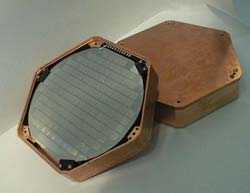Technical Research Centre of Finland, VTT is serving as an expert in a European project for developing processing methods for mobile videos. In the near future, consumers will be able to store videos taken by video camera and video phones to their personal digital archives, where they can search and browse them, share them with their friends and view them on their own devices. The videos are easy to find and view on a computer, mobile phone or handheld computer. The new methods promote the commercial
Hundreds of stretches of DNA may be so critical to life’s machinery that they have been “ultra-conserved” throughout hundreds of millions of years of evolution. Researchers have found precisely the same sequences in the genomes of humans, rats, and mice; sequences that are 95 to 99 percent identical to these can be found in the chicken and dog genomes, as well.
Most of these ultra-conserved regions do not appear to code for proteins, but may instead play a regulatory role. Evolutionary
McGill University researchers design and test computer games that enhance self-esteem
Can computer games help raise self-esteem? Absolutely. In a world-first study, researchers from McGill University’s Department of Psychology have created and tested computer games that are specifically designed to help people enhance their self-acceptance.
Available for public consultation at www.selfesteemgames.mcgill.ca, the games have catchy names such as Wham!, EyeSpy: The Matrix a
VLT Measures Properties of New Jupiter-Size Objects in Very Close Orbits
Discovering other Worlds
During the past decade, astronomers have learned that our Solar System is not unique, as more than 120 giant planets orbiting other stars were discovered by radial-velocity surveys (cf. ESO PR 13/00, ESO PR 07/01, and ESO PR 03/03).
However, the radial-velocity technique is not the only tool for the detection of exoplanets. When a planet happens to pass in front o
Since November, a physics experiment called the Cryogenic Dark Matter Search (CDMS II) has been looking for components of dark matter, the primary “stuff” of which the universe is made. Conducted from the Soudan Underground Mine in northern Minnesota, the search is for postulated dark matter particles called WIMPS–weakly interacting massive particles. So far, the experiment has found no WIMPs, but neither has it found contamination from stray neutrons. CDMS II member Priscilla Cushman, a physics pro

CDMS II presents new results on Weakly Interacting Massive Particles that could make up most of the matter of our universe
With the first data from their underground observatory in Northern Minnesota, scientists of the Cryogenic Dark Matter Search have peered with greater sensitivity than ever before into the suspected realm of the WIMPS. The sighting of Weakly Interacting Massive Particles could solve the double mystery of dark matter on the cosmic scale and of supersymmetry on the